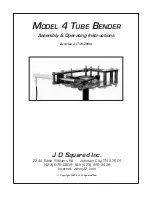
59
Notes
1.
Wait 10 ms after sending the colon (‘:’) before sending the rest of the
command (‘
x
<c/r>’).
2.
Wait 30 ms after sending the ‘:
x
<c/r>’ command before
analyzing the response(s).
3. There might be
four cases with the conditions of 2.1 & 2.2:
#1:
Both
conditions are true:
Both responses will be transmitted –
first ‘^
x
<c/r>’ and then ‘A
x
<c/r>’.
(Old address retired and address
x
became active.)
#2:
None of the conditions is true:
There will be no response.
(No address was active before, none is active now.)
#3: Only 2.1 is true:
‘^
x
<c/r>’ will be transmitted.
(No address is active, as old address retired and the new
one does not exist.)
#4: Only 2.2 is true:
‘A
x
<c/r>’ will be transmitted.
(Address
x
became active.)
4.
Verify normal address switching by the ‘n’ command. In case of
unexpected response to the ‘n’ command, repeat the ‘:
x
<c/r>’
command. In case #1 of note 3 (which is the most frequent) this
verification is not needed, simplifying the switching procedure.
















































